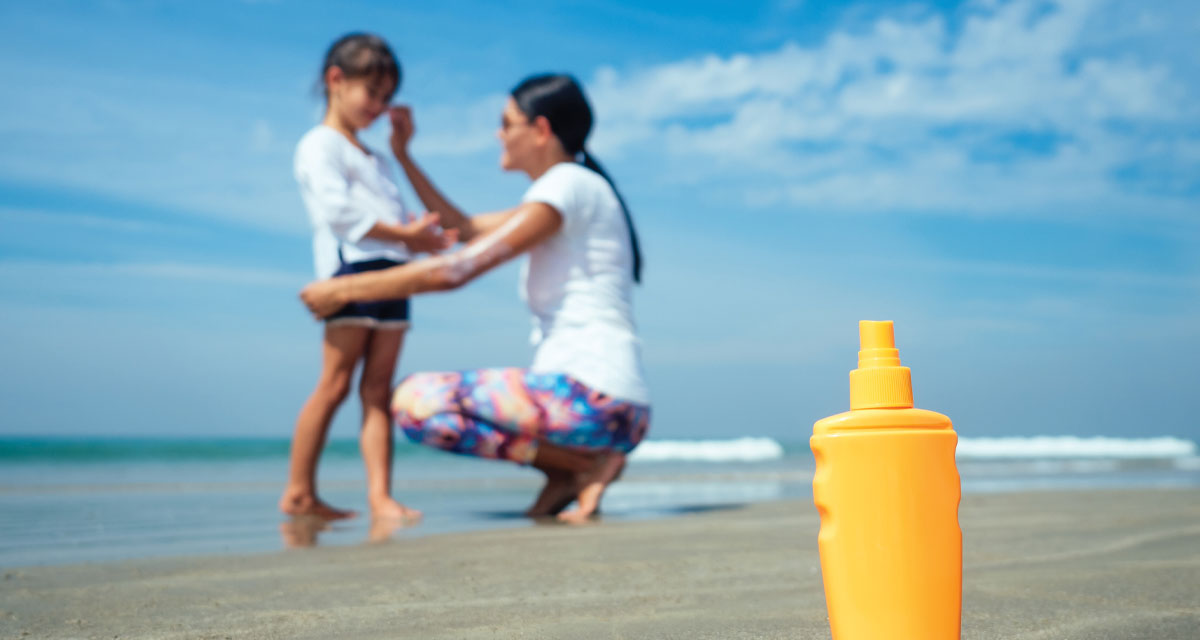Each month this series will provide important facts and tips surrounding child safety in an effort to support parents and caregivers as they navigate reducing risks and creating the safest environment possible for the children in their lives.
What kid doesn’t love summer? Sunshine, popsicles, poolside memories? And who could forget about summer vacation from the school year? With additional time spent outdoors in the elements, let’s talk about keeping our children safe during the summer season, so you can focus on making positive memories.
Pool, Beach, and Water Safety
Some of the best summer memories adults have surround water play at their favorite beach, lake, or neighborhood pool—even running through sprinklers in the back yard with friends and siblings! Always proceed with caution surrounding water activities, especially with your younger children. The “National Drowning Prevention Alliance (NDPA)” has stated that “according to the CDC, drowning is the leading cause of unintentional death of children 1-4 years and the second- leading cause of unintentional injury death for children 1-14 years.” Always have adult supervision and set boundaries for your kids about where they can and cannot play. Teach swimming skills for different stages and increase water smarts, helping kids know what to avoid beyond their swimming skills and what to do in case of a water-related emergency. Place barriers, such as gates, fences, and locked doors, between children and any water access when they are unsupervised.
Beating the Heat
Most parents agree that summer is to be enjoyed spent outside instead of in the living room, so let’s play smart! Prolonged sun exposure without the proper precautions can cause risks of heat exhaustion, sunburn, thermal burns, and more, for children. Apply sunscreen with a high SPF to your children’s exposed skin and wear protective gear like sunglasses, hats, and breathable clothing. Fill a water bottle with clear drinking water or low-sugar high-electrolyte beverages for them to have nearby when playing outside, reminding kids also to take water breaks! To avoid burns, pay close attention to the temperature outside and the heat index before touching metal playground equipment and seating. Provide guidelines to your older children regarding what they need to do before stepping outside to play for the day, and prepare these same needs for your little ones or caregivers.
Insects & Reptile Awareness
Several native insects and reptiles are drawn to the hot, dry weather during the summer, creating an increased risk of bites and stings. While you hope not to need this information, it’s good to be prepared and aware of what poisonous snakes are native to your area and how to identify them. Be aware of areas that may have certain high-risk species hiding in them, such as backyard sheds, under play items, behind a garden hose that hasn’t been used recently, and more. Apply age-appropriate insect repellent containing DEET to help repel ticks and other biting and stinging bugs. Pay close attention to any child who has a known allergy to bee stings or other insect bites and tell the adult who is supervising their outdoor activities ahead of time. If the child has any medication or an epi pen for emergencies, be sure they know where it is and how to administer it, should it be necessary.
Summer Trips & Travel
Summer doesn’t always mean sunshine! Avoid driving, especially with children, when adverse weather conditions are known in advance, even when it means postponing travel or holiday plans. Always plan accordingly for weather conditions when packing attire and emergency preparedness items for summer trips to the mountains, beach, or camping. Remember that summer heat can become dangerous; a child’s body can heat up five times faster than an adult’s. Never leave a child unattended in a car! The temperature inside a car rises quickly and can become fatal in minutes. Safety experts implore adults to establish a routine where they “look before they lock,” that is, “establish a routine to check the car before locking up the vehicle,” to help prevent accidental car deaths of children and babies.
Taking Action If Injury or Accidents Occur
Always have a First Aid kit conveniently nearby, as well as any important documents, such as lists of medications your child is currently taking and phone numbers for contact information for pediatricians and emergency contacts. If you are unsure about the severity or care of an injury, but have concern, don’t wait to head to your nearest emergency room or call 911.
Helpful Resources to Learn More
- Children’s Heath – www.childrens.com {ONLINE ARTICLE HYPERLINK: https://www.childrens.com/health-wellness/10-summer-safety-tips-for-kids}
- Parent Guide News – www.parentguidenews.com {ONLINE ARTICLE HYPERLINK: http://www.parentguidenews.com/Articles/Juneis NationalSafetyMonth }























